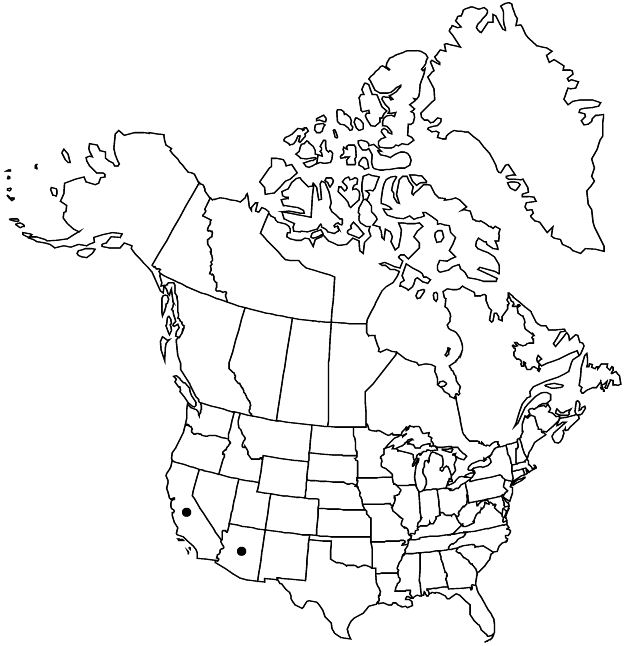Croton wigginsii
Contr. Gray Herb. 124: 37. 1939.
Shrubs, 2–10 dm, dioecious. Stems densely branched, appressed-lepidote. Leaves not clustered; stipules absent; petiole 1–4 cm, usually less than 1/2 blade length, glands absent at apex; blade narrowly elliptic to linear-oblong, 2–8.5 × 0.6–1.5 cm, more than 2 times as long as wide, base obtuse, margins entire, apex obtuse to rounded, abaxial surface pale green, adaxial surface darker green, both densely pale stellate-lepidote. Inflorescences unisexual, racemes or thyrses; staminate 1–3.5 (–10) cm, flowers 3–8 (–15); pistillate 0.5–1 cm, flowers 1–6. Pedicels: staminate 1–7 mm, pistillate 1–2 mm (4–7 mm in fruit). Staminate flowers: sepals 5, 1 mm, abaxial surface stellate-hairy; petals 0; stamens 10–15. Pistillate flowers: sepals 5, equal, 2 mm, margins entire, apex incurved, abaxial surface stellate-lepidote; petals 0; ovary 3-locular; styles 3, 1.5–2.5 mm, 2–3 times 2-fid, terminal segments 12–24. Capsules 7–10 × 6–8 mm, smooth; columella 3-winged. Seeds 6.5–7 × 2–3 mm, dull. 2n = 28.
Phenology: Flowering Feb–May.
Habitat: Sand dunes.
Elevation: 10–100 m.
Distribution

Ariz., Calif., Mexico (Baja California), Mexico (Sonora)
Discussion
Croton wigginsii is closely related to C. californicus but more robust in its habit and floral features, and is restricted to sand dunes in a limited area of the Sonoran Desert. In the flora area, C. wigginsii is known only from Yuma County, Arizona, and Imperial County, California.
Selected References
None.
Lower Taxa
"connate" is not a number. "distinct" is not a number.